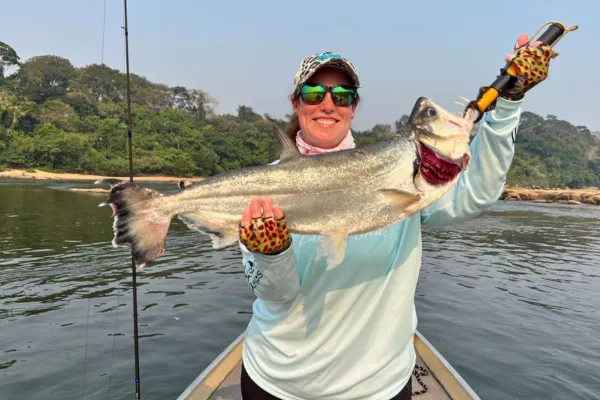
Ultimate Guide to Payara Species: Silver, Orange-Tail, and Machete Vampire Fish
Payara Species Guide
Silver Payara, Orange-tail Payara & Machete Payara
The Vampire Fish of the Amazon – Sleek, Explosive, and Armed with Fangs
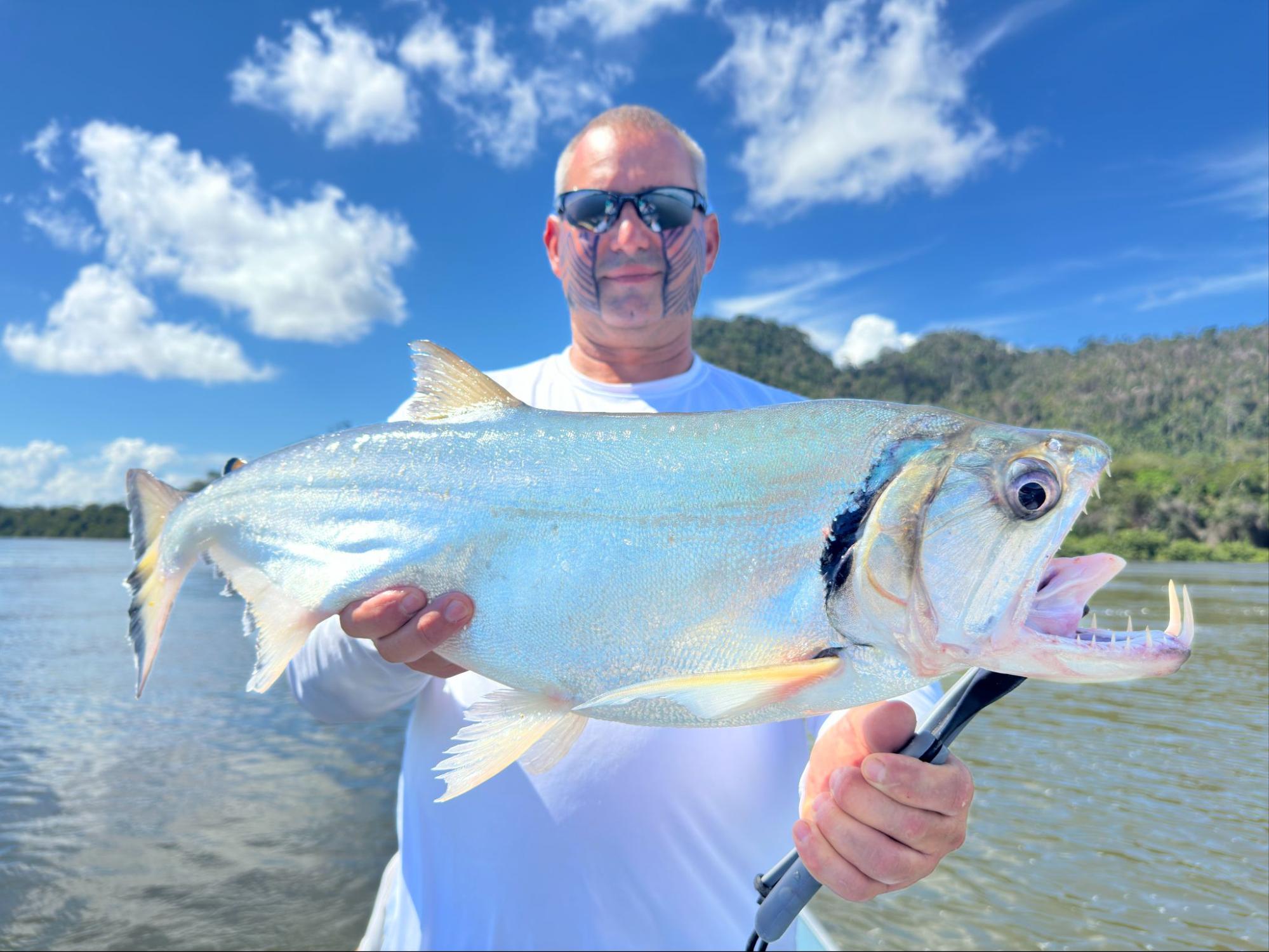
Introduction
Few Amazon fish fire the imagination like the payara. Known as “vampire fish” for their menacing fangs and violent strikes, these powerful predators haunt the fast-moving rivers of South America. When they hit a lure, they often go airborne in a wild, twisting effort to throw the hook — thrilling anglers and raising heart rates.
The three main species are Silver Payara, the largest and most powerful; Orange-tail Payara, known for its vivid caudal fin; and the slender, elusive Machete Payara. Each delivers a different challenge, but all share the explosive power and brutal tactics that make vampire fish legendary.
Many anglers come for peacock bass and leave obsessed with payara. Whether it's the skyward leap of a Silver or the electric flash of a pinktail, these fish deliver intensity and unforgettable variety on any Amazon adventure.
Interesting Facts & Notes
“Vampire fish” isn’t just a nickname — both Hydrolycus species have lower fangs up to 4 inches long that protrude from the jaw and sheath into sockets in the upper skull.
Payara are aerial acrobats — when hooked, they often rocket out of the water and twist violently to dislodge the lure.
All three species are fast-water specialists, using current seams and eddies to ambush baitfish.

Orange-tail Payara was formally described in 1999, making it a relatively recent discovery compared to Silver Payara.
Their Latin name, Hydrolycus, means “water wolf,” a fitting title for fish that feed primarily on live prey and seldom tolerate competition.
Despite their fearsome appearance, none of the vampire fish species are dangerous to humans.
Payara – General Characteristics
All three of the vampire fish species belong to a unique family of Amazon predators known as the Cynodontidae. These fish are defined by adaptations that make them apex ambush predators in high-current environments. Their physiology is centered around speed, precision, and penetration power.
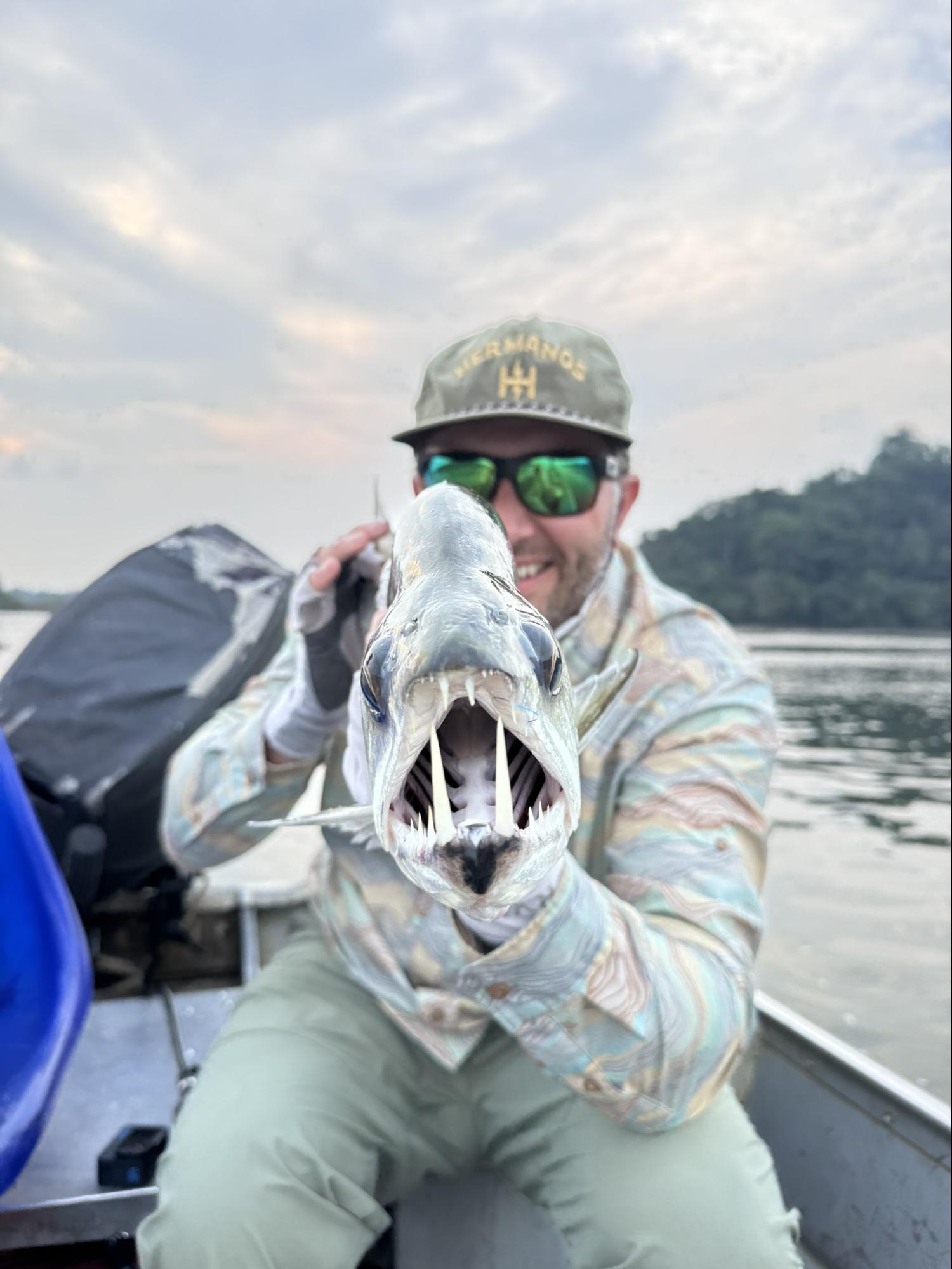
The most recognizable features include:
Enormous fangs: Hydrolycus species possess two prominent lower fangs that fit into upper jaw sockets — a key adaptation for holding live prey and allowing the mouth to close completely.
Hydrodynamic bodies: All species are built for life in swift, turbulent water. Their torpedo-shaped frames, deeply forked tails, and elongated jaws reduce drag and enable short bursts of extreme acceleration.
Minimal defensive structures: Unlike armored catfish or scale-covered cichlids, payara have thin, fragile scales and little physical defense. Their survival depends on evasion, speed, and predatory dominance.
Topwater predation: Although commonly caught on subsurface lures, payara are active feeders in the water column and will strike surface baits especially in oxygen-rich riffles or rapids.
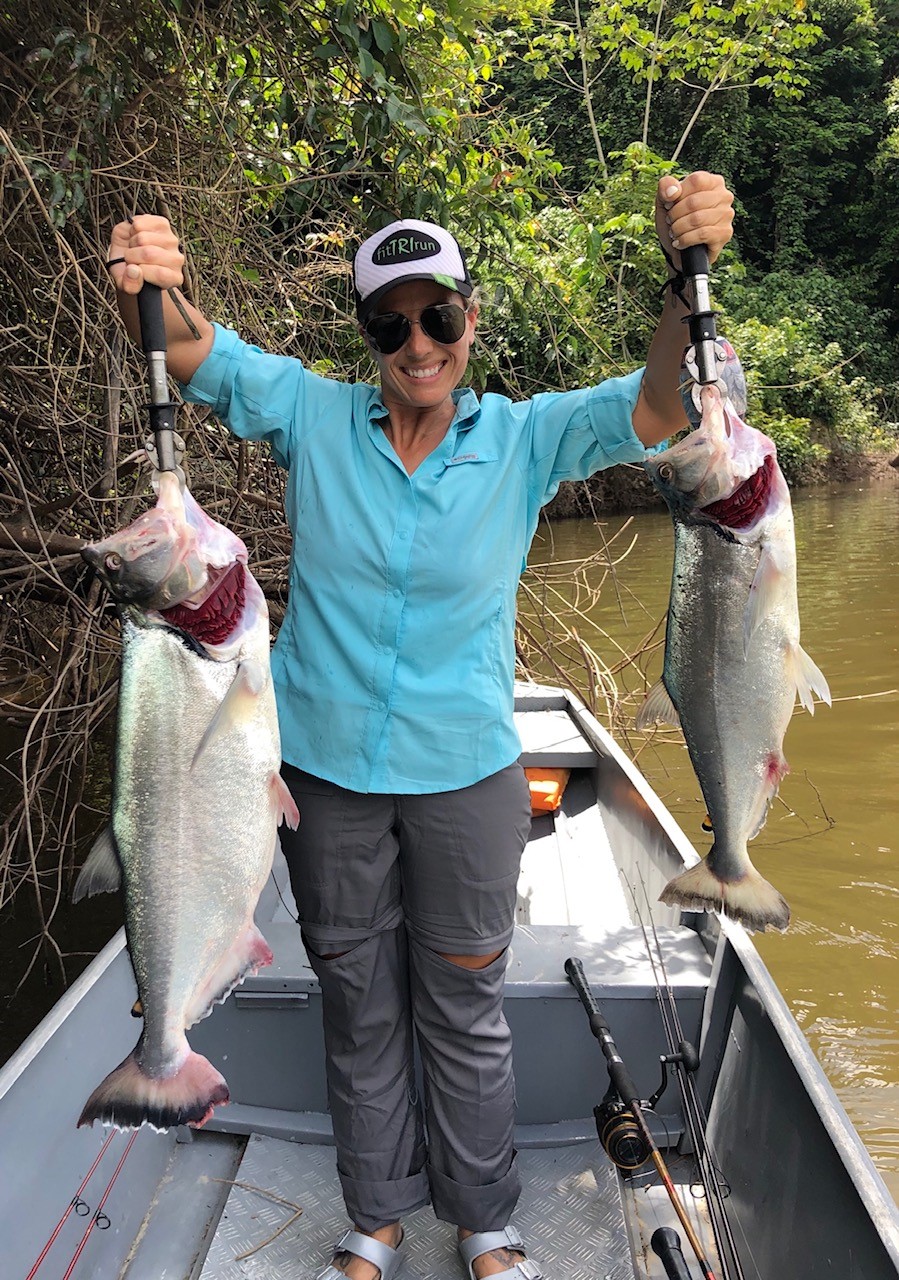
Comparative Identification Table – Vampire Fish Species
Silver Payara - Hydrolycus armatus
The Vampire of the Amazon
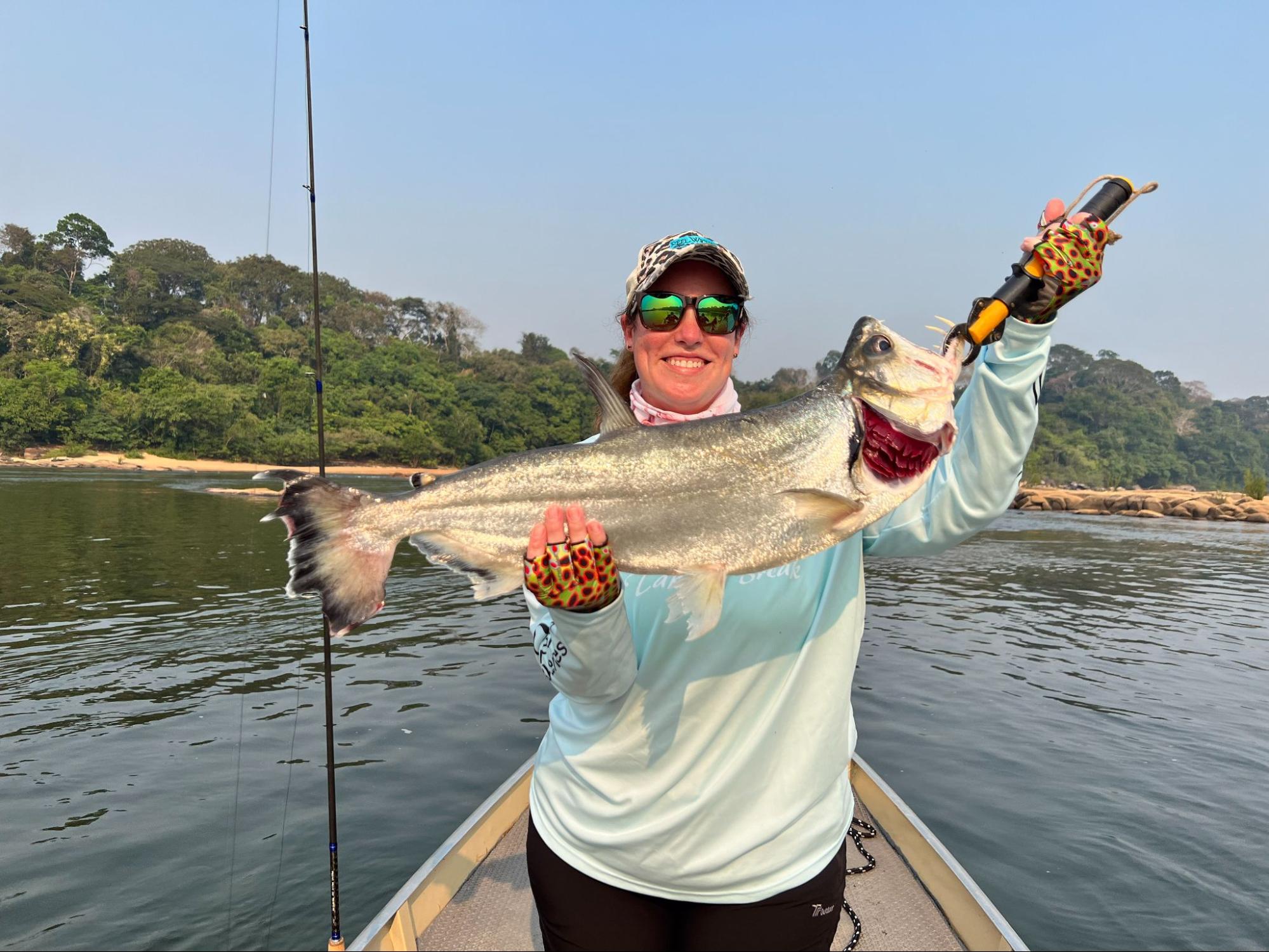
Among South America’s most ferocious freshwater predators, the Silver Payara is known for its fanged jaws, explosive strikes, and skyward leaps. These chrome torpedoes attack with shocking force, often going airborne in their fight to shake the hook — making them one of the Amazon’s most exhilarating gamefish.
Nicknamed the “vampire fish,” Hydrolycus armatus is a streamlined predator built to impale prey mid-strike. Found in powerful whitewater rivers, Silver Payara are apex chasers that rarely tolerate competition and feed almost exclusively on live fish.
For adventurous anglers, landing a big Silver Payara means fast hits, violent runs, and a fight that can explode into the air at any moment.
Quick Facts: Silver Payara
Where to Catch Silver Payara
Rio Aripuanã — Silver Payara lurk in deep eddies and current breaks where baitfish concentrate.
Xingu River — This remote and rocky fishery holds all three vampire fish species, with Silver Payara often dominating the deeper runs.
Interesting Facts
Payara rely heavily on vision and water pressure detection, allowing them to hunt in fast-moving, turbulent water where many other predators avoid.
They are capable of vertical ambush strikes, launching from below schools of baitfish like underwater missiles.
Silver payara are known to jump aggressively when hooked, often throwing lures with violent headshakes mid-air—a trait that makes them both thrilling and frustrating to catch.
Amazonian Lore & Cultural Connections
Called vampiro do rio (vampire of the river) or lobo d’água (water wolf), payara have long fascinated Amazonian communities. While rarely eaten, their dramatic fangs are sometimes worn as pendants — believed to offer strength or protection. Local legends describe them as guardians of deep pools and omens of danger. Their rarity makes them a point of pride among river anglers.
Behavior & Ecology
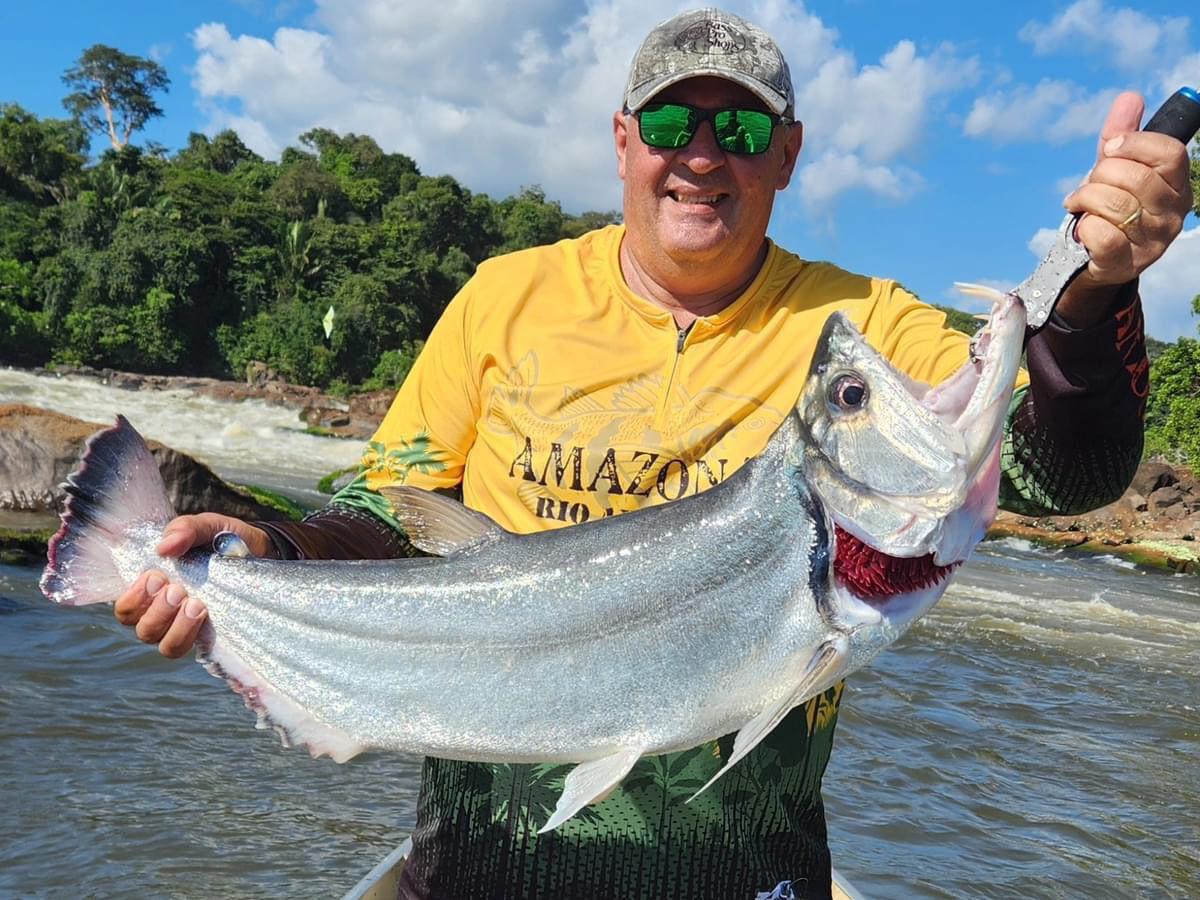
Silver Payara are sprinting assassins — built for speed, not stealth. With deep chests, forked tails, and massive jaws, they ambush baitfish by launching from current seams or below schools.
Unlike ambush predators that wait for prey, H. armatus often initiates the chase. Its fangs pierce prey mid-body, allowing it to circle back and consume them head-first. This style of hunting places it near the top of the Amazonian freshwater food chain.
Ideal habitat includes deep, fast-moving water with strong oxygenation. They prefer turbulent chutes, submerged rocks, and eddy lines where smaller fish are forced into tight groups.
Physical Appearance
Silver Payara have a streamlined, chrome-silver body with faint vertical striping and a dark lateral line. Their large eyes and translucent fins reduce visual profile in the current.
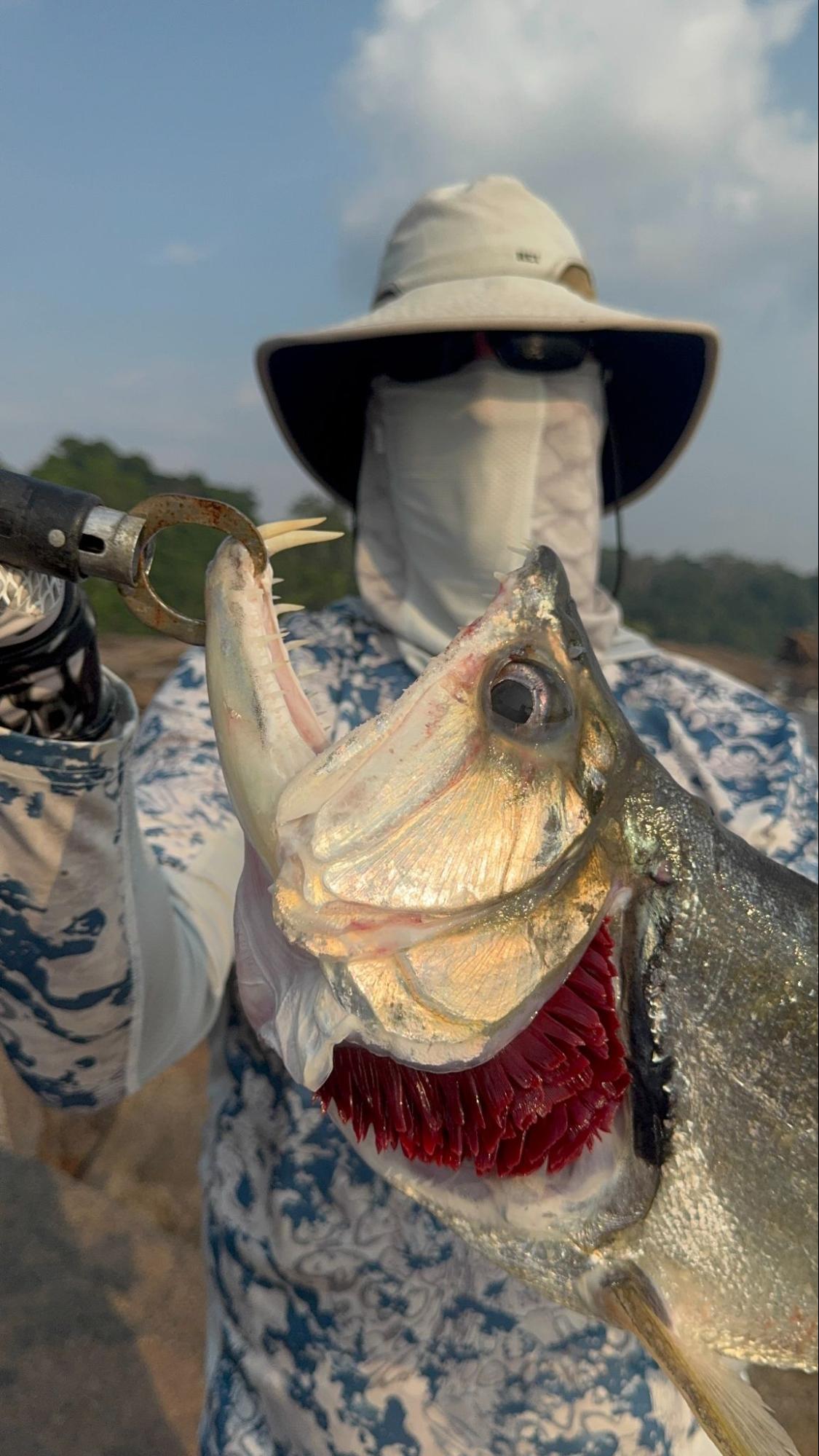
The head is broad and flat-topped, with a wide jaw and oversized lower canines that slot into the upper jaw. These fangs — sometimes reaching 4 inches — are permanently visible, giving the fish its signature “vampire” look. The tail is deeply forked, built for power, not finesse.
How to Identify Silver Payara
Bright Silver Coloration – with little body patterning
Large Size – 10–30+ lbs in strong fisheries
Exposed Fangs – Two long lower canines slot visibly into notches in the upper jaw
Long, Forked Tail – Deep V-shaped caudal fin for powerful swimming bursts
Translucent Fins – Mostly clear, with minimal pigment
Head Profile – Wide, flat top of the head with broad jaw and small dorsal placement
How to Catch Silver Payara
These fish hit hard and fight dirty. Most strikes are full-speed collisions, followed by powerful runs and repeated jumps. The biggest challenge is keeping them hooked during their aerial thrashing.
Effective Approaches
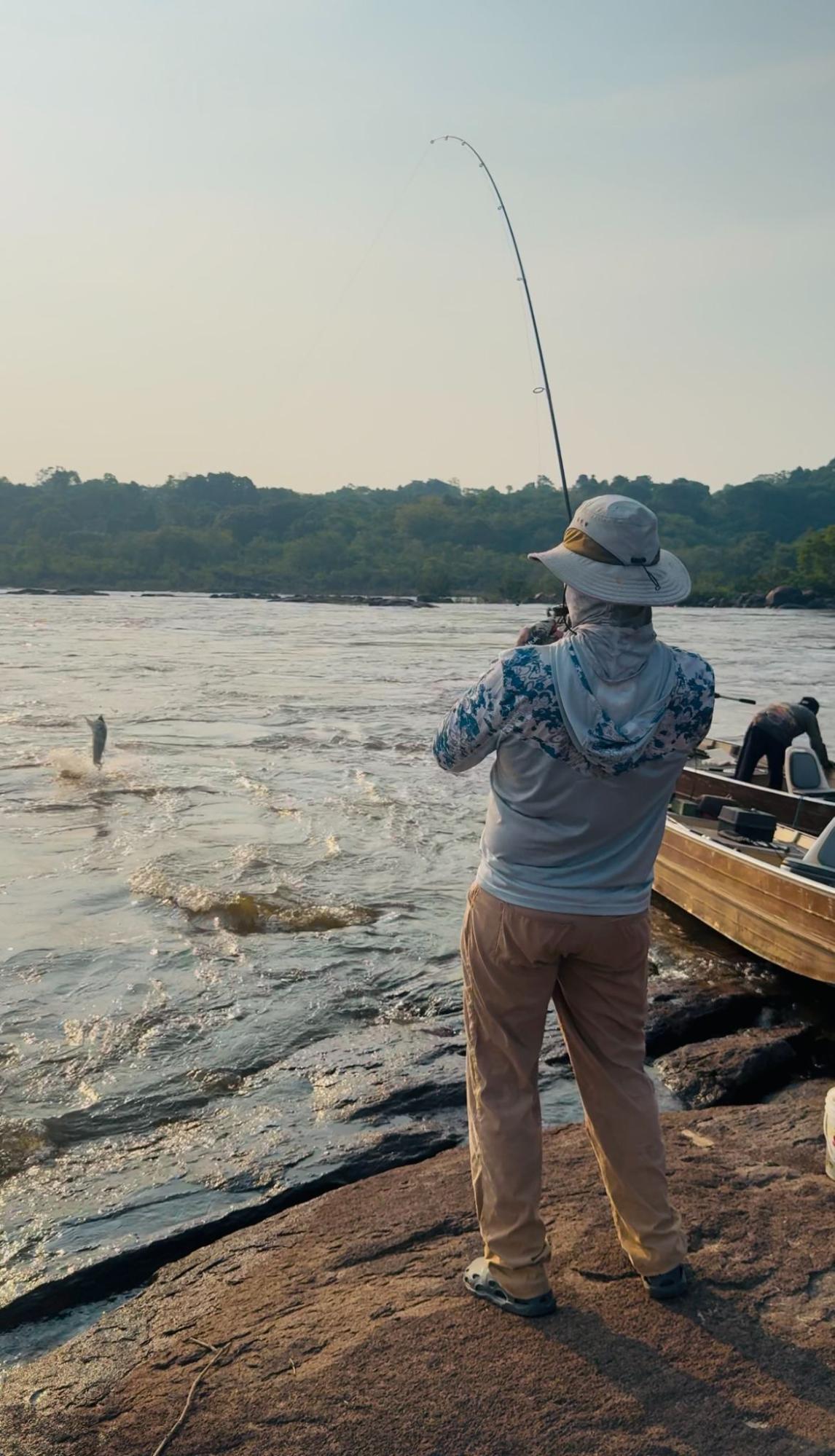
Drift Fishing — Present live bait, jigs, or large streamer flies through current seams and deep eddies
Casting Heavy Spoons or Jigs — Retrieve through turbulent water and let lures flutter near bottom
Subsurface Trolling — Run sinking plugs or crankbaits through deep channels
Conventional Angler’s Tackle Box
Rod & Reel: Heavy-action spinning or baitcasting setup
Line: 50–65 lb braided mainline
Leader: 50 lb wire leader
Hooks: 2/0–5/0 single or treble (barbless or crushed barbs preferred)
Lures:
Heavy spoons (Kastmaster, Johnson Splinter)
Bucktail jigs and soft plastics
Sinking plugs or crankbaits
Live or dead baitfish on sliding rigs
Fly Angler’s Tackle Box
Rod: 9-10 Weight, fast or medium fast action
Line: Match to Rod weight
Floating
Fast Sinking (300-450 grains)
Bring an extra line for both floating and sinking in case piranha or payara teeth shred a line
Leader:
7 foot of 50 pound fluorocarbon
12-18 inches of 40-50 lb knotable wire
Flies:
3/0-6/0 barbeless hooks
Hooks should be saltwater grade. Standard freshwater hooks will get bent or broken.
Baitfish patterns in various light and dark color patterns
Baitfish patterns should be larger 5-10 inches.
Saltwater poppers, gurglers, and divers for surface action
Consider using a trailing hook on fly patterns as payara strikes can be towards the tail.
Fishing Strategy
Read the river before casting. Silver Payara position where current funnels bait — at the base of rapids, behind boulders, near submerged trees. On overcast days or at dusk, they rise in the column and become even more aggressive.
Once hooked, keep a low rod angle and steady pressure. Expect violent leaps, headshakes, and rapid downstream runs. Many are lost mid-air — but each landed fish is earned, and unforgettable.
Taxonomic Context
Join the Adventure
Want to tangle with a silver torpedo in the wild waters of the Amazon?
Contact us today:
📞 (866) 832-2987
📧 [email protected]
Orange-tail Payara - Hydrolycus tatauaia
The Orange-Tail Torpedo

Often overshadowed by its larger cousin, the Orange-tail Payara is one of the Amazon’s most thrilling mid-sized predators. Known for its distinct orange or pink tail and high-speed attacks, this species delivers explosive strikes and chaotic, aerial fights. Though smaller than the Silver Payara, it may be even more aggressive — making it a favorite among adventurous anglers.
These vividly colored gamefish thrive in turbulent rivers like the Xingu and Aripuanã, where fast currents and rocky structure create ideal ambush zones. Their speed, acrobatics, and visual appeal make them a highlight of any multi-species trip.
Quick Facts
Where to Catch Orange-tail Payara
You can catch Orange-tail Payara on our multi-species trips:
Xingu River — Encounter Orange-tail Payara in the clear, rocky tributaries of the lower Amazon basin
Rio Aripuanã — Orange-tail Payara are an exciting and prized game fish on this multi-species adventure
Interesting Facts & Notes
The name tatauaia is derived from the Tupi language, translating to “the one that impales.”
Though smaller, Orange-tail Payara often outfight their larger cousin thanks to speed, current strength, and aerial ability.
Their caudal coloration becomes more vibrant with age and health—bright pink or orange indicates a dominant, well-fed fish.
Juveniles are nearly indistinguishable from Silver Payara until their tails begin to take on orange pigment.
One of the few Amazon predators that will attack a fast-moving crankbait worked upcurrent — defying common river predator behavior.

Amazonian Lore & Cultural Connections
River communities often refer to these fish as “red-tails” or “river knives,” warning children not to wade where feeding frenzies may occur. Though not targeted for food, their dramatic tail and fanged jaws make them both feared and admired.
Among anglers, Orange-tail Payara are considered a rare treat — hard-fighting, visually striking, and only found in select rivers. For lure and fly anglers, few things beat the sight of one exploding through the surface in a mid-river ambush.
Behavior & Ecology
Orange-tail Payara are fast-water hunters, often schooling near rocky structure where baitfish gather. Unlike the solitary Silver Payara, they’re more social and often hunt in small groups. Their behavior blends speed, aggression, and agility, especially in oxygen-rich, high-flow areas.
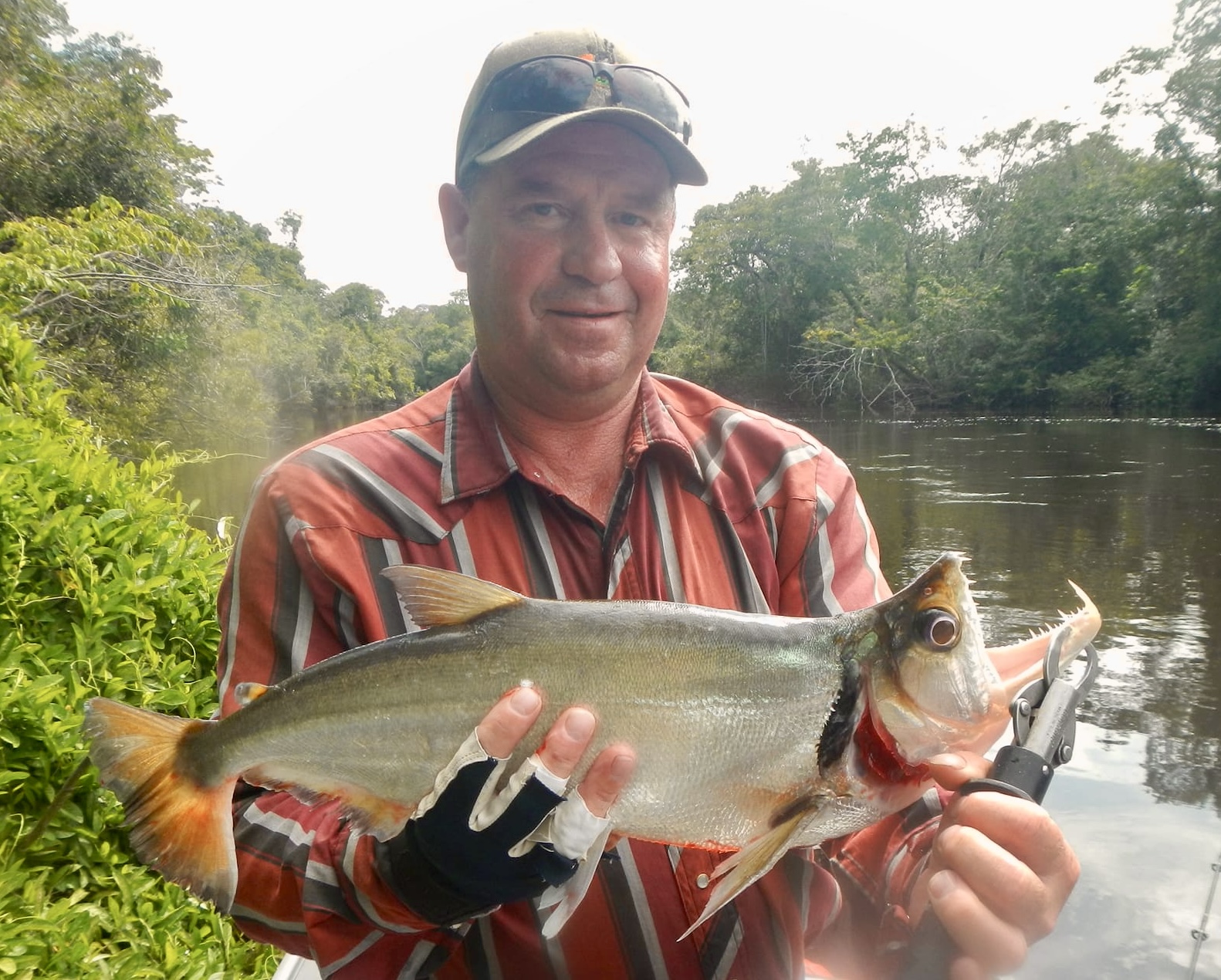
Their streamlined bodies and strong caudal fins allow them to dart, chase, and strike with precision. Though they rarely exceed 15 pounds, their energy and tenacity make them a top-tier gamefish. Most active during dawn, dusk, or when the water is turbulent, they thrive in broken current and boulder-strewn riverbeds.
Physical Appearance
These predators have silver bodies with a bronze sheen and a vivid orange or pink tail — a key ID feature. They have a compact, muscular frame with a more tapered head than H. armatus. The lower fangs are prominent but slightly smaller, and their eyes are large and adapted for tracking fast prey in moving water.
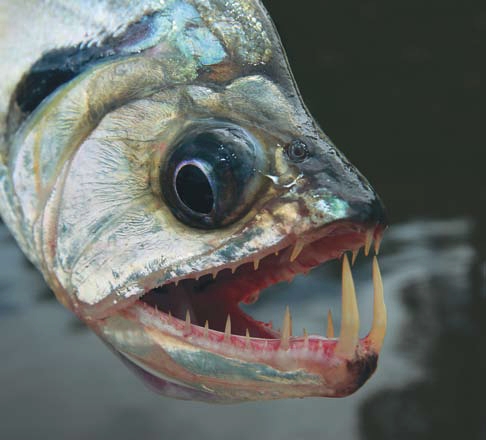
How to Identify Orange-tail Payara
Tail Coloration: Distinctive reddish-orange or pink caudal fin
Body Size: Typically 5–15 pounds; smaller and more compact than armatus
Fang Length: Still pronounced, but proportionally smaller than armatus
Body Shape: Streamlined, with a more torpedo-like silhouette and narrower head
Habitat Preference: Strong preference for fast, rocky waters with turbulent flow
How to Catch Orange-tail Payara
Smaller but no less aggressive, Orange-tails respond to movement, flash, and noise. They strike hard and fast, often going airborne immediately.
Effective Approaches
Drift Fishing — Present jigs, live bait, or flies through current seams or rocky pools
Casting Spoons & Jigs — Work fast along current edges and boulder points
Twitching Sinking Plugs — Use erratic retrieves to trigger reaction bites
Conventional Angler’s Tackle Box
Rod & Reel: Medium-heavy spinning or baitcasting gear with responsive tip and solid backbone
Line: 40–50 lb braided mainline
Leader: 40–50 lb wire leader
Hooks: Sharp 2/0–5/0 single or treble hooks, barbless preferred
Best Lures:
Small spoons (½–¾ oz)
Soft plastic jigs with ½ oz heads
Deep-diving plugs or X-Raps
Live or cut baitfish fished near structure
Fly Angler’s Tackle Box
Rod: 8-9 Weight, fast or medium fast action
Line: Match to Rod weight
Floating
Fast Sinking
Bring an extra line for both floating and sinking in case piranha or payara teeth shred a line
Leader:
7 foot of 30-40 pound fluorocarbon
12-18 inches of 30 lb knotable wire
Flies:
2/0-5/0 barbeless hooks
Hooks should be saltwater grade. Standard freshwater hooks will get bent or broken.
Baitfish patterns in various light and dark color patterns
Baitfish patterns should be larger 4-8 inches.
Saltwater poppers, gurglers, and divers for surface action
Consider using a trailing hook on fly patterns as payara strikes can be towards the tail.
Fishing Strategy
Focus on structure and seams — Orange-tails hold just behind current breaks or in eddies below rapids. Their schooling behavior means you may get multiple strikes from the same spot.
They often strike aggressively and immediately leap, so keep pressure on the line and rod angle low. Expect two or more aerial jumps per fight. Their bite is lightning fast, and their strike zones are tight — presentation and placement matter.
Join the Adventure
Want to chase payara in the wild waters of Brazil?
Contact us today:
📞 (866) 832-2987
📧 [email protected]
Biara aka Machete Payara - Rhaphiodon vulpinus
The Rare Blade of the Amazon
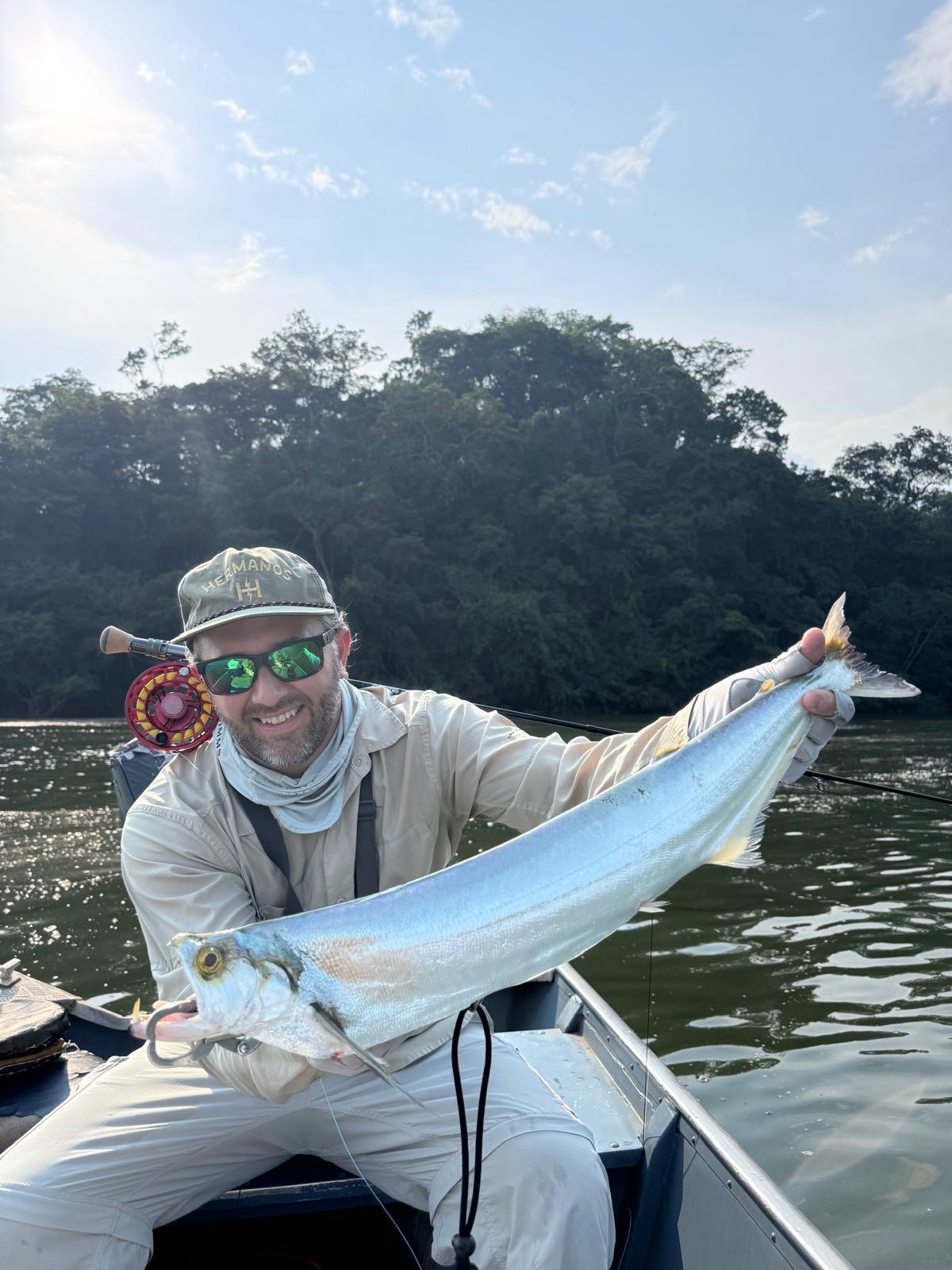
Long, lean, and lethal — the Machete Payara is one of the Amazon’s rarest and most fascinating predators. Also called biara, this saber-shaped fish is equipped with slicing dentition and lightning speed. Unlike its fanged Hydrolycus cousins, it uses a full row of sharp teeth to shear through prey.
Though smaller in size, Machete Payara strike with shocking violence and fight with relentless energy. Elusive and unpredictable, they haunt swift channels and rocky structure in clearwater rivers like the Xingu. For those who connect, it’s a memorable and electrifying encounter.
Quick Facts
Where to Catch Machete Payara
You can only catch Machete Payara on one Acute Angling trip:
Xingu River — Rare encounters with Machete Payara in side channels and below rapids with rocky bottoms.
Interesting Facts & Notes
Biara is a different genus than the Hydrolycus species, and is the only member of its genus—making it a true one-of-a-kind predator.
Their body shape and fin placement give them a distinctive, sabre-like profile—hence the nickname "machete" payara.
Unlike Silver Payara, it does not use canine fangs but rather slicing dentition.
Known to attack baitfish from below at lightning speed and then retreat into cover.
One of the rarest species encountered on Amazon fishing trips.
The name "vulpinus" means "fox-like"—a nod to its cunning, elusive behavior.
Amazonian Lore & Cultural Connections
Local names for Biara often translate as “silver knife” or “ghost fish,” owing to their flashing bodies and sudden attacks. While not typically fished for food, Machete Payara are sometimes seen as good luck omens when caught on accident—strange visitors from the depths.
Because they’re difficult to catch and rarely appear in markets, they’ve earned a mystique among jungle anglers. Even many seasoned local fishermen have never seen one in person.
Behavior & Ecology
Machete Payara are solitary, ambush-oriented predators that thrive in swift current and clear water. They prefer rocky channels and downed timber, where they hold tight to structure and launch sudden attacks on passing baitfish.
Their long, narrow bodies and deeply forked tails allow high-speed bursts. Unlike Silver and Orange-tail Payara, they don’t leap or overpower prey — they slash and vanish. Their feeding strategy relies on stealth, speed, and a raking bite that slices prey in one swift pass.
Physical Appearance
Biara have a long, thin, silver body with a narrow head and large eyes. Their most distinctive feature is their mouth — packed with interlocking, recurved teeth designed to shear, not stab. Their deeply forked tail and minimal fins make them ideal sprinters in current.
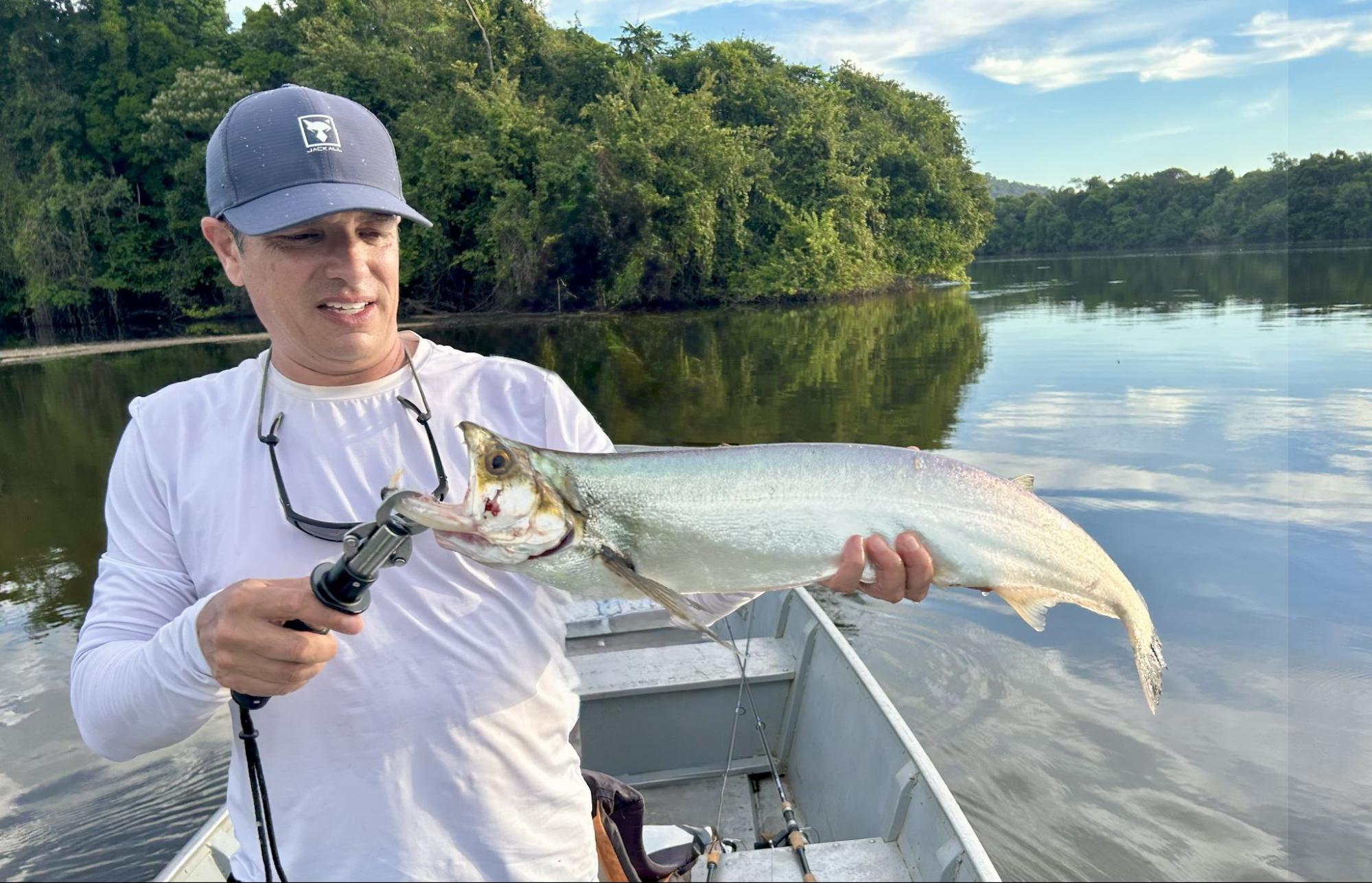
How to Identify Machete Payara
Body Shape: Long, slender, torpedo-shaped body
Teeth: Full row of sharp, overlapping teeth—not the two long fangs of Hydrolycus
Tail: Deeply forked caudal fin
Color: Bright silver with darker top line and occasional reflective sheen
Size: Smaller than Silver Payara, rarely exceeding 36 inches
How to Catch Machete Payara
Effective Approaches
Drift Fishing — Let bait drift naturally in pools or seams where biara ambush
Casting Flashy Lures or Flies — Use spoons, spinners, twitch baits, or streamer flies near submerged logs and boulders
Subsurface Retrieves — Soft plastics or small crankbaits with sharp, erratic movement
Conventional Angler’s Tackle Box
Rod & Reel: Medium-action spinning outfit for finesse presentation
Line: 30–40 lb braided line
Leader: 30–40 lb wire
Hooks: Size 1/0–4/0 single hooks preferred for smaller mouths
Best Lures:
Small spoons or spinners (Blue Fox, Mepps)
Soft plastic minnows or grubs
Floating/diving twitch baits
Live baitfish drifted through eddies
Fly Angler’s Tackle Box
Rod: 8-9 Weight, fast or medium fast action
Line: Match to Rod weight
Floating
Fast Sinking
Bring an extra line for both floating and sinking in case piranha or payara teeth shred a line
Leader:
7 foot of 30-40 pound fluorocarbon
12-18 inches of 30 lb knotable wire
Flies:
2/0-5/0 barbeless hooks
Hooks should be saltwater grade. Standard freshwater hooks will get bent or broken.
Baitfish patterns in various light and dark color patterns
Baitfish patterns should be larger 4-8 inches.
Saltwater poppers, gurglers, and divers for surface action
Consider using a trailing hook on fly patterns as payara strikes can be towards the tail.
Fishing Strategy
The key to catching Machete Payara is to move fast and cast often. Hit key structures, work likely zones, and don’t waste time in dead water.
When hooked, Machete Payara will often dart laterally or dive for cover. They rarely jump like other payara species but make up for it with blistering speed and relentless runs. Once landed, they require careful handling—those teeth are unforgiving, even for experienced anglers.
For many, simply seeing a Biara flash out of a submerged log is enough to spark obsession. They’re the kind of fish that haunts a multi-species angler’s memory—rare, exotic, and unforgettable.
Taxonomic Context
Join the Adventure
Ready to pursue one of the Amazon’s most exotic predators? Join Acute Angling for a trip to the Xingu River, where Machete Payara and their vampire cousins await in the swirling currents.
Contact us today:
📞 (866) 832-2987
📧 [email protected]
Payara in Action
Related Reading
Peacock Bass Angling: A Quick Overview of Tactics and Techniques — Includes gear tips relevant for aggressive Amazon predators
Giant Catfish of the Amazon — Learn about other species that share the waters with Orange-tail Payara
Travel, Trip, and Evacuation Insurance; Don't Leave Home Without It — Advice to make sure your Amazon adventure is insured
Amazon Peacock Bass – The Ultimate Peacock Bass Fishing Experience in South America — Learn all about the most popular gamefish in the Amazon
References
Giarrizzo, T. & Sousa, L. (2021). Peixes Fluviais do Brasil: Espécies Comuns da Ictiofauna Continental Brasileira.
Zeinad, A. K. & Prado, R. A. (2012). Peixes fluviais do Brasil: espécies esportivas.
Toledo-Piza, M., Menezes, N. A., & Santos, G. M. (1999). "Systematics of Machete Payara" in Ichthyological Explorations of Freshwaters
NatureServe Payara Species Reports
Acute Angling Field Data (1999–2025)
Lundberg, J. G., et al. (1998). “The South American Fish Genus Hydrolycus (Characiformes: Cynodontidae).” Ichthyological Exploration of Freshwaters.
Goulding, M. (1980). The Fishes and the Forest: Explorations in Amazonian Natural History. University of California Press.
Toledo-Piza, M., Menezes, N. A., & Santos, G. M. (1999). "Revision of the South American Payara: Hydrolycus" in Ichthyological Explorations of Freshwaters.


